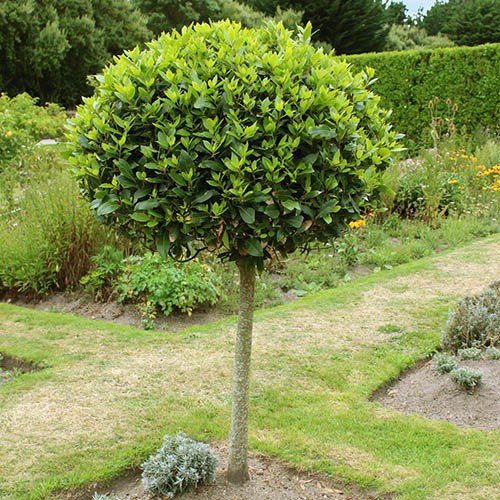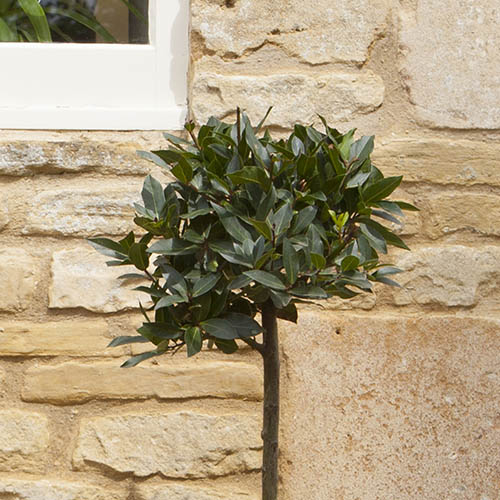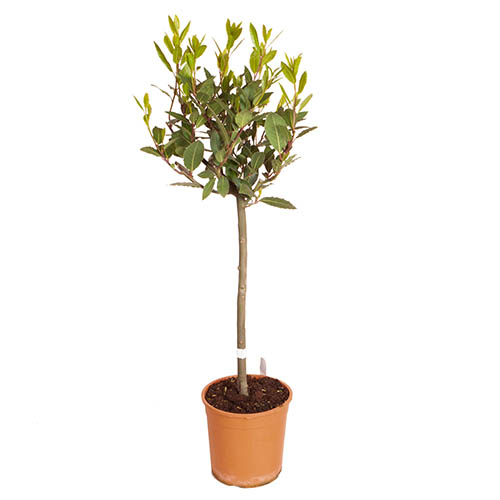Description

A Bay Tree is more than just a pretty face in the garden. With its aromatic leaves and stunning appearance, it can turn any space into a landscape fit for royalty. This blog post unveils the magic behind this evergreen gem, its uses, and how to care for it. Whether you’re a seasoned gardener or a green thumb in training, you’ll find everything you need to know about the Bay Tree right here. So, let’s delve into the world of this enchanting tree and discover why it deserves a spot in your garden.
What is a Bay Tree?
Definition
A bay tree, scientifically known as Laurus nobilis, is an evergreen shrub or small tree that belongs to the Lauraceae family. It is native to the Mediterranean region and is widely cultivated for its aromatic leaves, which are commonly used in cooking and for their ornamental value. The bay tree is also referred to as the bay laurel, sweet bay, or simply bay.
Description
The bay tree can reach a height of up to 12 meters, with a dense and compact crown. Its leaves are dark green, glossy, and leathery in texture, measuring around 6 to 12 centimetre’s in length. These leaves are lance-shaped and have a strong, pleasant fragrance when crushed or bruised. The tree produces small, yellowish-green flowers that are inconspicuous but emit a sweet scent.
Bay trees are highly valued for their culinary uses. The leaves are commonly used in stews, soups, sauces, and marinades, imparting a distinctive flavour and aroma to dishes. The dried leaves, also known as bay leaves, are often added to spice blends, such as bouquet garni, to enhance the taste of various recipes.
Apart from its culinary significance, the bay tree is also cultivated for its ornamental value. Its lush foliage and elegant form make it a popular choice for gardens, landscapes, and as a topiary plant. The bay tree can be grown in containers or as part of a hedgerow, adding a touch of Mediterranean charm to any outdoor space.
In addition to its aesthetic appeal, the bay tree has historical and cultural significance. In ancient times, it was considered a symbol of wisdom, peace, and protection. The wreaths made from bay leaves were worn by poets, scholars, and athletes as a sign of honor and achievement. Even today, bay leaves are used in certain rituals and ceremonies to bring good luck and ward off evil spirits.
Overall, the bay tree is a versatile plant that offers both practical and aesthetic value. Whether used in the kitchen or as a decorative element in gardens, its distinctive fragrance and timeless charm continue to captivate people around the world.
History and Origin of Bay Trees
Bay trees, also known as Laurus nobilis, have a fascinating history and origin that dates back to ancient times. These evergreen trees have not only been valued for their ornamental beauty but also for their practical uses. In this section, we will explore the ancient uses of bay trees and how they were introduced to Europe.
Ancient Uses of Bay Trees
The ancient Greeks and Romans held bay trees in high regard and considered them sacred. They believed that bay trees were a gift from the gods and associated them with victory, honour, and wisdom. The leaves of the bay tree were used to make wreaths and crowns, which were worn by victorious athletes, military commanders, and scholars.
Apart from their symbolic significance, bay trees were also valued for their medicinal properties. The leaves were used to make herbal remedies for various ailments, including digestive issues, respiratory problems, and rheumatism. The essential oil derived from bay leaves was believed to have antiseptic and antibacterial properties, making it a popular ingredient in ancient medicinal practices.
Introduction of Bay Trees to Europe
The introduction of bay trees to Europe can be traced back to the ancient Egyptians, who were known for their extensive trading networks. The Egyptians imported bay trees from the eastern Mediterranean region, where they grew abundantly. From there, bay trees gradually spread across Europe through trade routes and colonization.
The ancient Greeks were among the first to embrace the beauty and versatility of bay trees. They admired the laurel wreaths made from bay leaves and incorporated them into their religious ceremonies and festivals. The Romans, influenced by Greek culture, also adopted the use of bay trees and considered them a symbol of status and accomplishment.
During the Middle Ages, bay trees were cultivated in monastic gardens across Europe. They were not only valued for their ornamental appeal but also for their culinary uses. The leaves of the bay tree were commonly used as a flavoring agent in soups, stews, and sauces, adding a distinctive aroma and taste.
In conclusion, the history and origin of bay trees are deeply rooted in ancient civilizations. From their sacred significance to their practical applications, bay trees have played a significant role in various aspects of human culture. The introduction of bay trees to Europe has resulted in their widespread cultivation and appreciation, making them an integral part of botanical history.
Growing and Caring for Bay Trees
Bay trees, also known as Laurus nobilis, are incredibly versatile and beautiful plants that can enhance any garden or outdoor space. With their aromatic leaves and elegant growth habit, bay trees have become a popular choice among gardeners. In this section, we will explore the ideal growing conditions for bay trees, as well as provide insights into planting and propagation, pruning and shaping techniques, and tips for dealing with common pests and diseases.
Ideal Growing Conditions
To ensure the healthy growth and development of bay trees, it is essential to provide them with the ideal growing conditions. Bay trees thrive in well-drained soil that is rich in organic matter. They prefer a slightly acidic to neutral pH level, ranging between 6.0 to 7.5. Additionally, bay trees require a location that receives ample sunlight, ideally six to eight hours a day.
When it comes to temperature, bay trees are relatively hardy and can tolerate a wide range of climates. However, they do best in regions with mild winters and warm summers. If you live in an area with colder winters, it is advisable to grow bay trees in containers so that you can bring them indoors during the colder months.
Planting and Propagation
When planting a bay tree, it is essential to select the right location. Choose a spot in your garden that offers sufficient sunlight and protection from strong winds. Before planting, prepare the soil by adding compost or well-rotted manure to improve its fertility and drainage.
To plant a bay tree, dig a hole that is twice the width and depth of the tree’s root ball. Gently remove the tree from its container, ensuring that the root ball remains intact. Place the tree in the hole, making sure that it is level with the surrounding soil. Backfill the hole with soil, firming it gently around the roots. Water the tree thoroughly after planting.
Bay trees can also be propagated through cuttings. Take semi-ripe cuttings in early summer, ensuring that they are approximately 10-15 centimetre’s long. Remove the lower leaves, dip the base of the cutting in rooting hormone, and plant it in a well-draining potting mix. Place the pot in a warm, bright location, and mist the cutting regularly to maintain humidity. With proper care, the cutting should develop roots within a few weeks.
Pruning and Shaping
Regular pruning is essential to maintain the shape and size of bay trees. Pruning also encourages the growth of new shoots, which helps to keep the tree looking full and healthy. Prune bay trees in late spring or early summer when the new growth has emerged.
When pruning, start by removing any dead, damaged, or diseased branches. Next, selectively prune the tree to shape it according to your preference. Bay trees respond well to pruning and can be trimmed into various shapes, such as balls, cones, or pyramids.
Remember to use sharp and clean pruning tools to prevent the spread of diseases. After pruning, apply a layer of mulch around the base of the tree to help retain moisture and suppress weed growth.
Pests and Diseases
While bay trees are generally hardy and resistant to pests and diseases, they can still be susceptible to certain issues. One common pest that affects bay trees is the bay sucker (Trioza alacris). These small sap-sucking insects can cause distorted growth and yellowing of the leaves. To control bay suckers, regularly inspect your tree for signs of infestation and remove affected leaves.
Bay trees can also be affected by various fungal diseases, such as powdery mildew and root rot. To prevent these diseases, ensure proper air circulation around the tree by avoiding overcrowding and watering at the base of the plant, rather than overhead. If you notice any signs of fungal infection, promptly remove and destroy the affected parts.
In conclusion, growing and caring for bay trees can be a rewarding experience for any gardener. By providing the ideal growing conditions, implementing proper planting and propagation techniques, practicing regular pruning and shaping, and being attentive to pests and diseases, you can ensure that your bay tree remains healthy, vibrant, and a beautiful addition to your garden.
Culinary and Medicinal Uses of Bay Leaves
Bay leaves, also known as laurel leaves, are a versatile and aromatic herb that has been used for centuries in both culinary and medicinal practices. Their distinctive flavour and fragrance make them a popular addition to a variety of dishes, while their numerous health benefits have been recognized by ancient civilizations and modern science alike.
Cooking with Bay Leaves
When it comes to cooking with bay leaves, they are commonly used as a flavourful seasoning in soups, stews, sauces, and marinades. These leaves have a slightly floral and herbal taste, with hints of bitterness and sweetness. Bay leaves are often added to dishes at the beginning of the cooking process to infuse their unique flavour into the recipe.
To use bay leaves in cooking, simply add a few whole leaves to your dish while it simmers, and remove them before serving. Alternatively, you can also crush or grind the dried leaves to release their essential oils and sprinkle them as a seasoning. However, it is important to note that bay leaves are not meant to be eaten, as they can be quite tough and have a sharp texture.
Aside from enhancing the taste of your dishes, bay leaves also contribute to a pleasant aroma. They can be a delightful addition to broths, curries, and slow-cooked meals, providing a warm and comforting scent that fills your kitchen.
Health Benefits of Bay Leaves
Beyond their culinary uses, bay leaves offer a range of health benefits. These leaves contain essential oils, such as eugenol and cineole, which possess anti-inflammatory, antibacterial, and antioxidant properties. Here are some potential health benefits associated with bay leaves:
- Digestive Health: Bay leaves have traditionally been used to soothe digestive issues, including indigestion, bloating, and gas. The compounds present in bay leaves may help stimulate enzyme production, aiding in the breakdown of food and promoting healthy digestion.
- Respiratory Support: The aromatic compounds found in bay leaves are known to have a positive impact on respiratory health. Inhaling the steam from bay leaf-infused hot water may help alleviate symptoms of coughs, colds, and congestion.
- Blood Sugar Control: Some studies suggest that bay leaves may assist in regulating blood sugar levels. The antioxidants and other bioactive compounds present in bay leaves may improve insulin function, potentially benefiting individuals with diabetes or those at risk of developing the condition.
- Anti-inflammatory Effects: The anti-inflammatory properties of bay leaves have been studied for their potential to reduce inflammation in the body. This may be beneficial for individuals with conditions such as arthritis or inflammatory bowel disease.
- Stress Relief: The soothing aroma of bay leaves is believed to have calming effects on the mind and body. Including bay leaves in your diet or enjoying their fragrance through aromatherapy may help reduce stress and promote relaxation.
It is important to note that while bay leaves offer potential health benefits, they should be used in moderation and as part of a balanced diet. As with any herbal remedy, it is advisable to consult with a healthcare professional before incorporating bay leaves into your daily routine, especially if you have any underlying health conditions or are taking medications.
In conclusion, bay leaves are not only a delightful addition to your culinary creations but also offer potential health benefits. Whether you are seasoning a hearty stew or seeking natural remedies, bay leaves can add both flavour and wellness to your life.
Symbolism and Folklore Surrounding Bay Trees
The symbolism and folklore surrounding bay trees have captivated cultures around the world for centuries. These majestic evergreen trees, known for their aromatic leaves and versatile uses, hold mythological and historical significance, as well as a plethora of superstitions and traditions. Let’s explore the enchanting world of bay tree symbolism and folklore.
Mythological and Historical Significance
In ancient Greek mythology, the bay tree held a special place as a symbol of victory and wisdom. It was associated with the god Apollo, the embodiment of intellect and artistic inspiration. The laurel wreath, made from bay leaves, was awarded to poets, athletes, and victorious warriors as a mark of honour and excellence.
The historical significance of bay trees dates back to the Roman Empire. Emperors and military generals were adorned with laurel wreaths to signify their achievements and authority. This tradition has persisted through the ages, with bay leaves still being used in ceremonial crowns and garlands to symbolize triumph and success.
Superstitions and Traditions
Bay trees have also been associated with various superstitions and traditions. In some cultures, it is believed that planting a bay tree near your home brings good luck and wards off evil spirits. The presence of a bay tree is said to protect the household from negativity and promote harmony within the family.
In folklore, bay leaves are believed to possess magical properties. Placing a bay leaf under your pillow before sleep is said to bring vivid dreams and enhance psychic abilities. Burning bay leaves as incense is thought to cleanse the energy in a space and promote spiritual clarity.
Additionally, bay leaves have long been used in culinary traditions to add flavor and fragrance to dishes. In Mediterranean cuisine, bay leaves are a staple ingredient in soups, stews, and sauces, imparting a distinctive aroma and taste.
Conclusion
In conclusion, the bay tree is not only a beautiful addition to any garden or landscape, but it also offers a multitude of benefits. From its aromatic leaves that can be used in cooking, to its ability to repel insects and pests, the bay tree is a versatile and practical plant.
Additionally, the bay tree’s evergreen nature means that it can provide year-round beauty and interest, no matter the season. Its glossy leaves and compact growth habit make it an excellent choice for hedges or topiaries.
Furthermore, the bay tree’s historical significance and symbolic meaning make it a timeless and meaningful addition to any outdoor space. Whether you are looking to add a touch of elegance to your garden or create a Mediterranean-inspired retreat, the bay tree is sure to add both style and substance.
In terms of care, the bay tree is relatively low-maintenance, requiring only occasional pruning and watering. With proper care, your bay tree can thrive for many years to come, bringing you joy and beauty throughout its lifespan.
The bay tree is a versatile, practical, and visually appealing plant that is well worth considering for your garden or landscape. Its aromatic leaves, ability to repel pests, and historical significance make it a unique and valuable addition to any outdoor space. So why not embrace the beauty and benefits of the bay tree and enjoy its many rewards?




Adrian uk –
Well packaged arrived fast.,healthy tree good value..
Amazon Customer –
Really pleased bigger than I expected, will order again
PDys –
Very good plants and arrived on time and well packaged
Amazon Customer –
I’m happy with the bay tree which was delivered promptly with appropriate packaging. It would have been better if I knew the girth of the top part and the age of the tree as it was a little bit smaller than I expected.
Adam ward –
Such good value, arrived well packaged and quicklyTree is lovely looking and great condition
Joanne m danielJoanne m daniel –
Gorgeous trees. Arrived before the due date, packaged well. Very healthy looking. I’ve potted one so far. Would highly recommend.
AndersZ –
So pleased with my new Bay tree. Healthy, new growth showing and a good full size. Very well packaged and arrived on time. 10/10, thank you!
daisy –
I was expecting a bay tree as per the picture shown online, but it arrived smaller.
Tinkey JamesTinkey James –
Was very pleasantly surprised at the quality and size of this bay tree